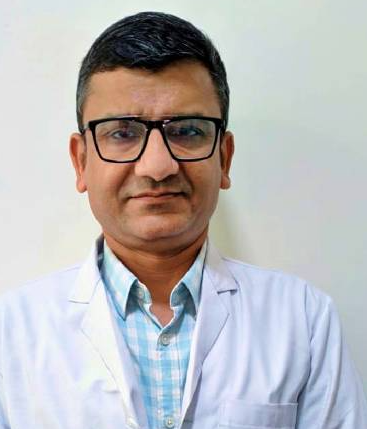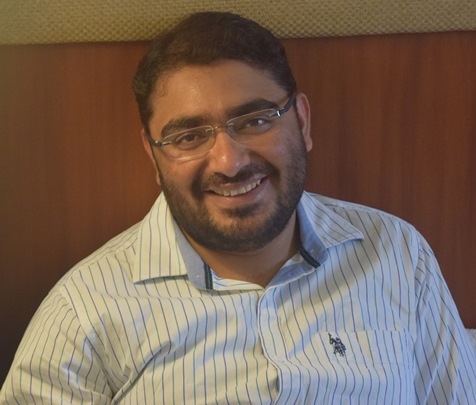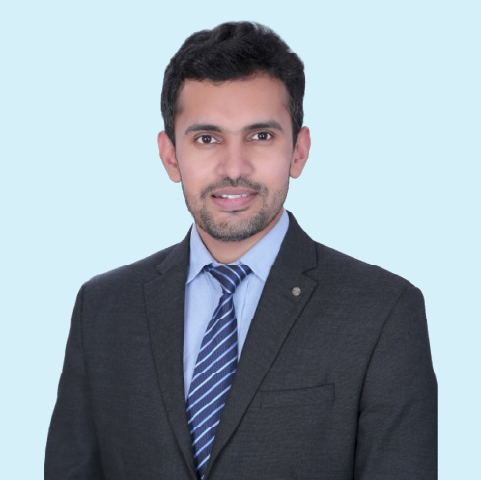Nose Job Gone Wrong? - Is Rhinoplasty Safe, Side Effects

Quick Summary
- Rhinoplasty, like any surgical procedure, carries certain risks and potential complications.
- Some of the most common complications of rhinoplasty include bleeding, infection, scarring, and difficulty breathing.
- In some cases, a nose job gone wrong can also cause the nose to look less attractive.
Table of Contents
- What is Rhinoplasty?
- How can Rhinoplasty go wrong?
- What happens after a nose job goes wrong?
- What does Revision rhinoplasty target?
- Risks and Complications of Rhinoplasty
- Do's and Don'ts after a Rhinoplasty Surgery
- What is the success rate of Rhinoplasty in India?
- Takeaway
- Frequently Asked Questions
- References
Results from nose jobs are often excellent but can also be terrible. A nose job gone wrong can also cause breathing issues, scarring, infection and other aesthetic problems as well. They might make your nose less attractive. And the results of Rhinoplasty after 20 years may quite not be the same.
Rhinoplasty, like any surgical procedure, carries certain risks and potential complications. It's important to note that not all of these complications will occur, and that many of these complications can be addressed with revision surgery.
Keep reading the following blog to know more about is nose surgery safe and to see images of nose jobs gone wrong before and after.
What is Rhinoplasty?
Rhinoplasty is also known as a nose job. It is a surgical procedure used to alter the shape and size of the nose. It is typically performed by a plastic surgeon and can improve the appearance of the nose and correct functional problems such as difficulty breathing.
There are two main types of rhinoplasty:
- Cosmetic rhinoplasty, which is used to improve the appearance of the nose.
- Functional rhinoplasty, which is used to enhance the function of the nose.
During the procedure, incisions are made either inside the nose or across the columella (the area between the nostrils) to access the underlying bone and cartilage. The surgeon will then reshape the nose as desired and may use grafts or implants to achieve the desired shape. After the surgery, the patient will need to wear a splint on the nose for a week or two to help the nose maintain its new shape.
The results of rhinoplasty after 20 years are considered to be long-lasting. However, it is possible that some subtle changes to the nose may occur over time due to the natural ageing process or other factors.


How can Rhinoplasty go wrong?
When patients face complications or are not happy with their initial rhinoplasty, they choose to have a revision rhinoplasty. Here are a few issues that can develop following a rhinoplasty:
- Pollybeak Deformity: The most frequent reason for revision rhinoplasties is pollybeak deformity, sometimes referred to as supratip deformity. Sometimes surgeons mistakenly overfill the little dimpling above the nose tip. This gives the nose a rounded appearance similar to a parrot's beak.
- Overly extended nose tip: Another typical error committed by unskilled surgeons is an overly extended nose tip. When a patient has an overly protruding tip to their nose (also known as a "Pinnochio nose"), it's typically because there is too much cartilage supporting the tip.
- Knuckling: When the cartilage on the sides of the nose is over-cut, it loses its springiness and develops knuckling, also known as tip bossae. As a result, the cartilage becomes twisted and warped, resulting in lumpy bossae or knuckles.
- Nasal Valve Collapse: Located in the middle to lower portion of the nose, the nasal valve is the narrowest portion of the nasal airway. Another typical problem associated with "rhinoplasty gone wrong" is nasal valve collapse. The patient's breathing may become difficult as a result. The treatment for nasal valve collapse frequently involves a second or even third surgical procedure.
- Distorted Tip: The tip of the nose may become deformed after rhinoplasty for a variety of reasons. During the treatment, the physician can remove too much cartilage, which could cause the nose to collapse. Additionally, it's conceivable that the nostrils will enlarge and appear "pinched." By selecting an experienced rhinoplasty surgeon, this can be prevented.
What happens after a nose job goes wrong?
Revision rhinoplasty, also known as secondary rhinoplasty, is a surgical procedure performed to correct nose job gone wrong problems that have arisen after a previous rhinoplasty procedure.
During revision rhinoplasty, the surgeon will make incisions in the nose and manipulate the underlying bone and cartilage to correct any problems. The specific technique will depend on the issues being addressed and may involve using grafts or other methods to reshape the nose.
The revision rhinoplasty procedure is similar to the initial surgery, but it may be more complex and challenging due to the presence of scar tissue and changes in the nasal structure. The surgeon will make incisions to access the underlying bone and cartilage and then reshape the nose as desired. The procedure can take several hours, and recovery time may be longer than the initial surgery.
What does Revision rhinoplasty target?
Revision rhinoplasty targets specific issues that may have arisen or persisted after nose job gone wrong. Some common issues that revision rhinoplasty addresses include:
- Aesthetics: Revision rhinoplasty can be performed to improve the overall appearance of the nose, such as by making it more symmetrical, reducing its size, or reshaping the tip.
- Structural issues: Revision rhinoplasty can address structural issues with the nose, such as a deviated septum, which can cause difficulty breathing, or a collapse of the nasal structure.
- Scar tissue: Scar tissue may have formed after the initial surgery, causing deformity or breathing difficulties. The revision rhinoplasty can remove the scar tissue and improve the appearance of the nose.
- Unsatisfactory results: Revision rhinoplasty can be performed to correct unsatisfactory results from the initial surgery, such as an unnatural appearance or asymmetry.
Risks and Complications of Rhinoplasty
In rare cases, rhinoplasty may result in permanent complications, such as difficulty breathing or a change in the shape of the nose that is not satisfactory to the patient. It is essential to carefully consider the risks and benefits of any surgical procedure before proceeding and choosing a qualified and experienced plastic surgeon to perform the surgery.
Some potential risks and complications of a nose job gone wrong include the following:
- Infection: An infection can occur at the incision site or within the nasal structure. This can usually be treated with antibiotics, but further surgery may be necessary in rare cases.
- Bleeding: There is a risk of bleeding during and after the procedure, which may require additional surgery to stop the bleeding and repair any damage.
- Swelling: Swelling is one of the most common side effects of rhinoplasty and can take several weeks or months to resolve fully.
- Scarring: Rhinoplasty involves incisions in the nose, which may result in scarring. In most cases, the scars are not noticeable once they have fully healed.
- Numbness or loss of sensation: There is a risk of temporary or permanent numbness or loss of sensation in the skin of the nose or around the incision site.
- Difficulty breathing: In rare cases, rhinoplasty may cause difficulty breathing, either temporarily or permanently. This can usually be corrected with additional surgery.
- Changes in the shape or appearance of the nose: There is a risk that the shape or appearance of the nose may not be satisfactory to the patient. In some cases, additional surgery may be necessary to correct any problems.
- Anaesthesia complications: There is a risk of complications from the anaesthesia used during the procedure, such as allergic reactions or breathing problems.
Do's and Don'ts after a Rhinoplasty Surgery
Here is a table with a list of dos and don'ts after a nose job gone wrong:
| Do's | Dont's |
|
Follow your surgeon's instructions for post-operative care, including taking any prescribed medications and keeping follow-up appointments. |
Blow your nose for at least the first week after surgery. |
|
Keep your head elevated to reduce swelling. |
Touch or bump your nose for at least the first week after surgery. |
|
Apply cold compresses to your nose as directed by your surgeon. |
Wear glasses or sunglasses for at least the first week after surgery. |
|
Avoid strenuous activity and heavy lifting for at least the first week after surgery. |
Wear contact lenses for at least the first week after surgery. |
|
Wear sunscreen on your nose to protect it from the sun's rays. |
Drink alcohol for at least the first week after surgery. |
What is the success rate of Rhinoplasty in India?
The success rate can vary depending on various factors such as the surgeon's experience, skill, and qualifications, the complexity of the surgery, and the patient's specific goals and expectations.
Studies show that an astounding 85–90% of rhinoplasties performed in India are successful. This data reveals that one of the top locations for rhinoplasty surgery is India.
Takeaway
In rare cases, rhinoplasty may result in difficulty breathing or a change in the shape of the nose that is not satisfactory to the patient. It is essential to carefully consider the risks and benefits of any surgical procedure before proceeding and choosing a qualified and experienced plastic surgeon to perform the surgery.
If you are considering getting a rhinoplasty, it is essential to carefully research and select a plastic surgeon who is experienced in performing the procedure. It is required to thoroughly discuss your goals and expectations and any potential risks and complications with your surgeon. This will help ensure you have a positive surgical experience and achieve the desired outcome. You can contact the experts at HexaHealth, who will guide you through the best treatment option possible!
Frequently Asked Questions
What happens after nose job gone wrong?
Rhinoplasty after 20 years: What to expect?
Rhinoplasty after 20 years is considered to be long-lasting. However, some subtle changes to the nose may occur over time due to natural ageing or other factors.
Is nose surgery safe?
Nose surgery, also known as rhinoplasty, is generally considered safe when performed by a qualified and experienced plastic surgeon. However, as with any surgery, risks and potential complications should be fully discussed with a surgeon before the procedure.
What are rhinoplasty side effects long-term?
The long-term side effects of rhinoplasty can include difficulty breathing, chronic pain, and dissatisfaction with the nose's appearance. In rare cases, revision surgery may be necessary to correct any issues.
When is rhinoplasty not recommended?
Rhinoplasty may not be recommended for individuals with certain medical conditions, such as uncontrolled hypertension or bleeding disorders, or for those who smoke, as this can impede healing. In addition, individuals with unrealistic expectations of the procedure or those who are not emotionally stable may not be suitable candidates for the procedure.
Is the nose weaker after rhinoplasty?
The nose may be weaker after rhinoplasty surgery, especially if the procedure involved removing cartilage or bone. This can make the nose more prone to injury and make breathing more difficult.
How long is rhinoplasty recovery?
The recovery time for rhinoplasty can vary, but typically takes about one to two weeks for the majority of the swelling and bruising to subside. It takes several months for the final result to be seen. During the recovery period, it is important to avoid strenuous activity and follow the post-operative instructions provided by the surgeon.
What percentage of people are happy with rhinoplasty?
The satisfaction rate of rhinoplasty varies, but studies have reported that most patients are pleased with the results of their surgery. Factors affecting satisfaction include the patient's preoperative expectations, the surgeon's skill, and the individual's healing process. Having realistic expectations and choosing a qualified and experienced surgeon is essential.
Last Updated on: 17 January 2023
Reviewer

Dr. Aman Priya Khanna
MBBS, DNB General Surgery, FMAS, FIAGES, FALS Bariatric, MNAMS General Surgery
13 Years Experience
Dr Aman Priya Khanna is a highly experienced and National Board–Certified Laparoscopic, GI, and Bariatric Surgeon with over 13 years of clinical expertise.
He is widely regarded as one of the best bariatric surgeons in Ahmedabad, ...View More
Author

An enthusiastic writer with an eye for details and medical correctness. An avid reviewer and publisher. She emphasises authentic information and creates value for the readers. Earlier, she was involved in making ...View More
Expert Doctors (10)
NABH Accredited Hospitals (5)
Latest Health Articles
Related Treatments



















 Open In App
Open In App